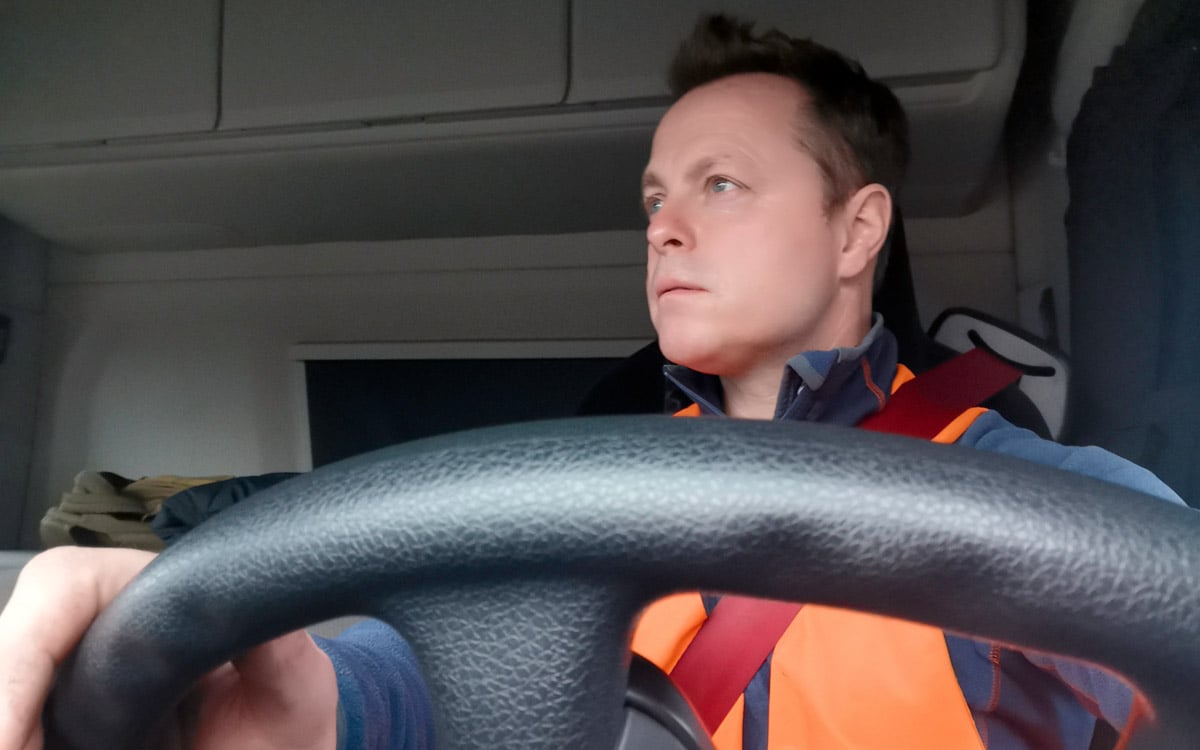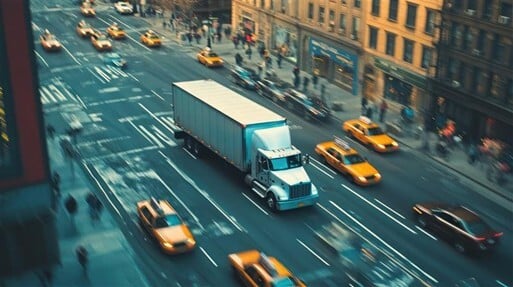The Cost of a Human Life
Putting a dollar figure to the value of a human life is an odd thing to do. Many of us do it though, when taking out life insurance to cover our...

Blind spot monitoring systems were first introduced in 2005 by Volvo as an option for their top-of-the-line passenger sedans. Today, they are almost a standard safety feature or option on new cars, certainly more expensive ones.
However, with heavy vehicles that is not the case. Only a small percentage of Australia’s heavy vehicle fleet has blind spot monitoring systems fitted – and that analysis is based on our 15 years of providing blind spot monitoring solutions.
We recently sat down to chat with Marc McPherson, SGESCO-MAX’s Head of Research & Development, to get the low-down on the blind spot systems used in MAX-SAFE solutions.
We wanted to help improve safety of industrial and commercial vehicles by preventing them from hitting people and objects due to drivers not being able to see clearly in mirrors or through direct line of vision. Our first blind spot monitoring solution, introduced in 2005, was MAX-SAFE Reverse Watch, which overcame blind spots at the rear of a vehicle. It came about in part in response to a request from a local council after someone was accidentally reversed over by a heavy vehicle.
To help with object detection in blind spots we utilise a range of technologies, including radar, ultrasonic, sonar and cameras. Each technology has its own advantages and disadvantages, affected by environmental conditions and technical limitations. The challenge(s) being solved determines the right technology to use – sometimes involving multiple technologies.
Radar and ultrasonic technologies are most commonly used, and the sensors emit electromagnetic waves that are reflected back by any objects that appear in a vehicle’s blind spot. More recently, radar technologies and camera-AI based technologies are proving to be beneficial as the technology capability has improved significantly. To that end, our blind spot monitoring systems now also extend to MAX-SAFE Front Watch, MAX-SAFE Side Watch and MAX-SAFE Corner Watch.
There are commercially available off-the-shelf solutions, however they often have limited functionality. We use commercial-grade, world-leading European sensing technology from Bosch, Brigade and Continental. Using this highly sophisticated technology, SGESCO-MAX has been able to improve detection and notification abilities with specific software-programmed Engine Control Units (ECUs) for custom applications.
What makes our solutions robust is the quality of componentry, the conceptualisation and sophistication of the solution, the testing we do and the internal smarts we code into the system.
Our solutions are built from the ground up, not bolted on as an add-on. They are evolved through extensive in-house Research and Development and stringent verification processes that ensure their ability to identify objects and people within certain ranges, speeds, and conditions. We also create custom solutions for specific vehicle types, body work designs and applications, for example a garbage truck side lifter. All our blind spot monitoring systems are manufactured and put through a rigorous test procedure in the factory and on the road. We also programme solutions to constantly check for internal faults i.e., to check that the system (ECU, sensors etc) is operating as designed – and provide a warning if not. This development and testing period typically takes around 3-6 months.
Our systems can be customised to achieve the best possible result as to the capabilities of the technologies, vehicle application and its operational environment.
Typical performances are:
Whilst we have been focused on the heavy vehicle applications, the solutions can be deployed into other markets, including light-rigid vehicles, mining equipment and industrial equipment such as forklifts etc. All have blind spots to varying degrees, depending on the location of the driver, operational environment, lack of direct vision, and likelihood of people being in the vicinity and not being seen.
On all light-rigid or heavy vehicles, the rear of the vehicle, typically, creates a danger zone when reversing. Depending on the type of heavy vehicle there is often no rear view mirror to provide any guidance, because there is a load behind the cabin blocking the view. Without blind spot detection, drivers only have their side mirrors to go by. These also don’t adequately cover everything on the side of a vehicle. The potential to reverse over someone or something is high – as it the possibility of reversing into something and damaging the vehicle.
Then there is the OFF-SIDE of the vehicle (opposite side of the vehicle that the driver is seated in). For this, trucks rely on side mirrors, and a growing tendency to include camera systems (installed as part of the side mirror.) However, the driver now has many items to look at to verify if anything is in a blind spot, and cameras are affected by environmental conditions such as sunlight, darkness and heavy rain. Sensor technology can allow a passive audible warning or extend to an active braking application to provide a much safer solution. This is what SGESCO-MAX provides.
Many larger, well-established commercial vehicle fleets have some kind of blind spot assistance system, most being passive systems. Progressive companies are employing active systems to help drivers and their vehicles reduce the risk of impacts.
We have installed Reverse Watch blind spot monitoring systems on over 2000 vehicles for organisations like Suez and Cleanaway. They are now looking at a more comprehensive blind spot management solution which we can now provide.
Safety of people has always been the key driver in any safety solution we develop. We have a working partnership with our waste management clients that actually drives a lot of our innovations because of the variations in their vehicles and the risk factors of people around garbage trucks and receptacles.
That said, protecting vulnerable road users has becoming a more pressing issue in recent years.
The number of bicycle riders has risen dramatically over the last decade and particularly since COVID-19. From 2008-2012 in London there was an acceptable number of deaths, largely caused by incidents with construction vehicles. This has spurred the development of safety technology and vehicle designs and laws in the UK around what safety equipment trucks must have. Other European cities have also introduced regulations which has resulted in more sophisticated base technology coming out of Europe. As technologies have improved and costs of the technologies have come down, concepting and designing have enabled SGESCO-MAX to develop viable products.
Here in Australia, the CLOCS-A movement is in its infancy, recommending construction companies adopt vehicle safety solutions for blind spot monitoring, like our MAX-SAFE range. What has also helped move blind spot solutions along is the precision of the underlying technology, for example our advanced radar technology can distinguish between an object or a pedestrian or cyclist.
SGESCO-MAX offers four blind spot monitoring solutions that effectively gives oversight of a vehicles blinds spots in all directions.
With safety solutions you can have passive systems (warning only) and active systems (ones that actively control a function of the vehicle). MAX-SAFE offers both types of systems, but we specialise in active systems, which are more beneficial in an ever increasingly complex working environment, because they don’t rely on the driver to respond. Active systems use artificial intelligence to take action faster than a human can.
To this end, each of our four blind spot solutions works with two complementary technologies:
This suite of products provides a holistic solution that we call the MAX-SAFE Eco-Safety system.
We are constantly investigating and trialling different technologies to improve or discover better ways to provide a reliable and robust system. The advancement in technologies driven by the autonomous vehicles market has provided a fantastic opportunity for us to provide even safer solutions. Solutions that are able to identify the type of object, and not just an obstacle, solutions that reduce the amount of false-positive alerts to drivers, and solutions that allow greater integration to reduce the number of screens needed.
We’re currently working on several solutions that utilise later technologies and plan to have them in market within the next six months.
Typically, the heavy vehicle is sold as a cab chassis. When a customised body is fitted, the blind spot solution must fit in and be designed to integrate with the body. Truck manufacturers are actively adding safety technologies that are in line with solutions built for cars.
We term this as the SAFETY BUBBLE. We envisage all round systems that dynamically warn and control vehicle functions dependant on risk and environment. This includes having all system communicating with each other and also communicating with the vehicle systems. This is all part of what will be delivered with the MAX-SAFE Safety Eco-System.
From a hardware / logistics point of view there are challenges when it comes to customisation – however we like a challenge. We work closely with cab chassis and body builders so learn intimately what the limitations and work-arounds are.
One of the big challenges we face in Australia is a lack of heavy safety regulations with respect to Vulnerable Road Users. A small number of local councils are implementing their own or shaping this space due to contract specifications.
The Office of Road Safety, a federal agency, could introduce new regulations which the National Heavy Vehicle Regulator could help drive.
2020 was an interesting year in that because of COVID-19 there were less VRU deaths, but the trend in Australia for many types of VRU incidents has been on the increase.
Unfortunately, it often takes several deaths and concerted lobbying campaigns before governments act on the problem.

Putting a dollar figure to the value of a human life is an odd thing to do. Many of us do it though, when taking out life insurance to cover our...

Blind spots at the front, corner and sides of heavy vehicles are often the main cause of collisions with vulnerable road users, resulting in...

Not every fleet carries the same level of risk. While some hazards are visible, others are built into the way vehicles operate and where they are...